Rutherglen is set within prime farming country, adjacent to the Murray River and is 998 km2 in size with a total of 781 hectares of vineyards and 18 wineries.
The terrain is relatively flat, interrupted by gentle hills, and the green, gold, and brown landscape is dotted with towering river red gums.
The wine industry began in the 1850s around the time of the gold rush, and just 30 years later, Rutherglen was a thriving wine centre, home to some of the largest estates in the world.
It was also the first Australian region to win a gold medal at the Vienna Exhibition and London International Exhibition.
This quintessential Australian region surrounds the town of Rutherglen, with most vineyards concentrated in the northern half where the Murray River separates our region from New South Wales.

Rutherglen’s climate is ideal for producing intensely-flavoured wines. The long hours of sunshine through summer and autumn, as well as the relatively high temperatures concentrate the naturally occurring sugars in the grapes, producing fruit that is rich and full-flavoured.
The long, dry autumnal weather enables grapes to ripen to optimum maturity, helping create balanced wine.
This is particularly important for reds, where the fruit balances the oak in maturation and enables longevity. It’s equally important for Muscats and Topaque, as the grapes stay on the vines and develop the high Baumé (sugar) levels and flavour ripeness required.
Soils vary across Rutherglen, though there are three main soil types.
In the northern band of the region closest to the Murray River, vines thrive in fine sandy loam. This well-draining soil typically produces floral wines with lower acidity and less tannin.
In the middle band of Rutherglen, on the lower slopes of the gentle hills, is red loam over clay, Called Rutherglen loam, this soil accounts for the majority of the region. It’s rich in minerals and has good moisture-holding ability, which is beneficial in Rutherglen’s warm and dry climate.
Rutherglen’s third major soil type contain bands of shale and quartz. This is a challenging profile for vines, producing intensely flavoured fruit.
57 Main Street, Rutherglen VIC 3685
Phone: 02 6064 2100
Monday – Sunday: 9am-5pm
Closed Christmas Day
You must be 18 years or over to purchase wine from this website. Enjoy wine responsibly.
Sign up now to gain exclusive access to Rutherglen’s finest limited release wines, the latest updates from our vineyards, wineries and winemakers, wine tips and tricks and be the first to know about our awesome events.
Site by Flat Elephant & High Country Digital